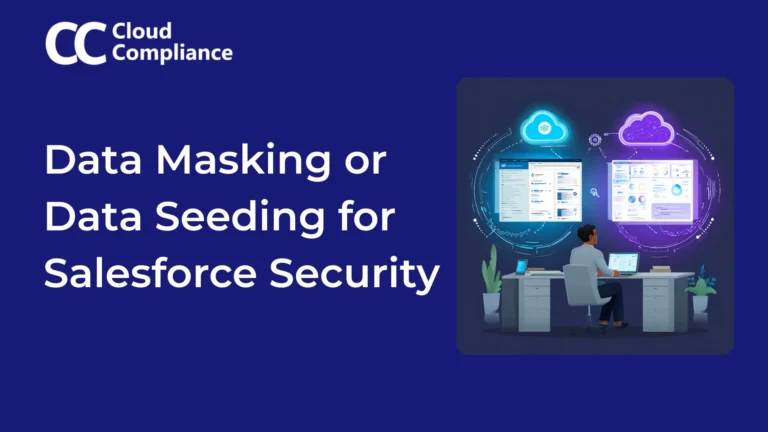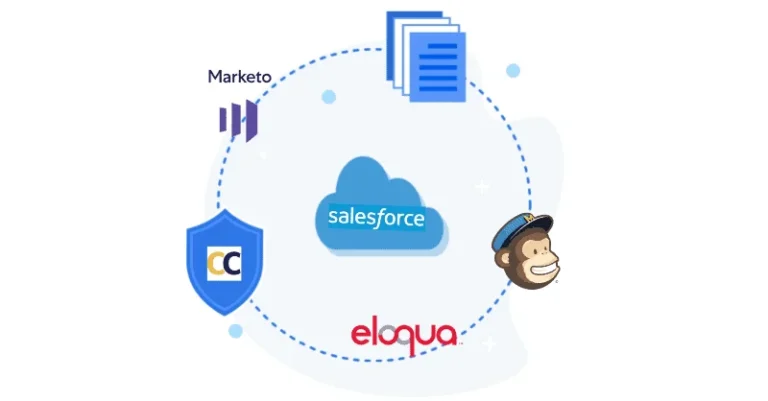
Data Masking vs Data Seeding in Salesforce: Which Approach Actually Protects Your Sensitive Data?
Data masking vs data seeding: Which approach keeps your Salesforce sandbox secure while enabling development teams?
How can you automate and simplify handling RTBF and Data Portability requests in Salesforce?
Salesforce Architects, compliance officers, and data privacy specialists are involved in handling RTBF and data portability requests.
To meet GDPR compliance while reducing the manual effort and risk associated with processing RTBF and data portability requests in Salesforce.
Here are five key steps to simplify and automate your Salesforce org’s RTBF and data portability requests.
First and foremost, make it super easy for data subjects to submit RTBF and portability requests.
Many companies include an email address on their privacy policy page, leading to additional manual work.
Instead, set up an email-to-case address so requests automatically generate a case in Salesforce that can be tracked and processed using standard functionality.
Alternatively, embed a simple Web-to-Case form on your site to capture requests.
Or deploy a self-service preference center using Salesforce’s out-of-the-box functionality or a solution like Cloud Compliance’s Privacy Center.
The key is to provide an intuitive, low-friction process for data subjects.
The next critical step is to validate that the individual submitting the request is who they claim to be. It is essential for data security and to prevent social engineering attacks.
If using Email-to-Case, you can automatically send a validation link to the email address on file in Salesforce. When clicked, this confirms the request originated from that address.
For extra assurance, you might require data subjects to provide proof of identification, log in to a community, or enter a code sent via SMS.
Work with your legal and compliance teams to define appropriate validation methods.
With the request validated, it’s time to locate and process the individual’s data. And this is where automation becomes crucial for consistency and efficiency.
For RTBF, you need to find and erase or anonymize the data subject’s information everywhere it resides – contact records, accounts, opportunities, tasks, files, chatter, field history, and more.
For portability, you must be able to extract and provide a machine-readable copy of their data easily.

Solutions like Cloud Compliance can fully automate these processes across standard and custom objects, parent-child relationships, lookups, and so on.
Alternatively, you can use Salesforce APIs to build your automation, which requires more development effort to ensure completeness.
Manually managing requests for the right to be forgotten (RTBF) and data portability poses too many risks due to the complexities of modern data models.
Even a mid-size company can easily face thousands of requests per year.
Standardizing and automating fulfillment is well worth the investment.
Whenever processing RTBF or portability requests, it’s critical to log detailed audit trails.
You need to be able to show what data was erased or provided, the Salesforce objects and records involved, and when processing occurred.
Eventually, you may purge the request details by retention policies.
Until then, maintain thorough records to demonstrate compliance and for investigation in the event of complaints or anomalies.
Let automation handle the audit logging to ensure consistency.
A final consideration, especially for companies with large, complex, and fast-changing Salesforce orgs, is the need to adapt automation as data models evolve easily.
As you add new objects, fields, and relationships, your RTBF and portability processes must accommodate those changes. Look for solutions with declarative configuration to modify in-scope data sets without code.
If building in-house, architect with maintainability in mind, leveraging metadata and abstraction layers to minimize hardcoding.
By keeping these five principles in mind – easy request capture, robust validation, end-to-end automation, comprehensive auditing, and adaptability – you can implement RTBF and portability processes that are efficient, secure, and compliant.
The investment upfront will pay dividends in reduced effort and risk over the long run.
By leveraging tools like Cloud Compliance’s Privacy Rights Automation, businesses can confidently navigate the complexities of CCPA/CPRA compliance, ensuring a secure, efficient, and compliant data management process.

Saurabh is an Enterprise Architect and seasoned entrepreneur spearheading a Salesforce security and AI startup with inventive contributions recognized by a patent.

Data masking vs data seeding: Which approach keeps your Salesforce sandbox secure while enabling development teams?

A plain English guide to the latest additions in the California Privacy Rights Act (CPRA) and their implications for Salesforce orgs.

Get a clear understanding of the GDPR’s impact on Salesforce and explores the benefits of automating RTBF and Data Portability.

65% of the world’s population will be protected by privacy laws by the year 2023 (Source: Gartner).California Privacy Rights Act (CPRA) will only protect Californians. So,

This is the second in our series of articles on GDPR. Check our previous article here on GDPR Data Inventory, Data Processing and Right To

“I don’t even know where to start…We have 5 Million customer records.” said the exasperated to-be DPO. As an American company that primarily does business

Salesforce and Cloud Compliance, a four-minute read about what Salesforce does and how Cloud Compliance works with it. Let’s start by knowing about our needs